
NVIDIA Announces GRID 2.0, Tesla M60 & M6 Server Cards
Kicking off this week in San Francisco is VMware’s annual VMworld conference. One of the major yearly virtualization conferences, it’s also host to a number of virtualization-related product announcements. And this year NVIDIA is wasting no time in making their announcements, releasing their major GRID news alongside this afternoon’s welcome reception.
To that end, today NVIDIA is announcing the next generation of their Virtual Desktop Infrastructure (VDI) GPU technology, GRID 2.0. This is the first full-point update of their VDI technology since the company launched GRID 1.0 back in 2012, and comes as GRID 1.x vGPU capabilities are finally widely available in the latest versions of VMware’s and Citrix’s respective hypervisors. GRID 2.0 in turn builds off of what NVIDIA has accomplished so far with GRID, further expanding the number of concurrent users and performance of GRID while also introducing some new features that didn’t make the cut for GRID 1.0.
Furthermore, launching alongside GRID 2.0 are new Maxwell based Tesla cards. While the launch of these cards is something of a low-key event – NVIDIA is opting to focus on GRID as opposed to the hardware – some of the new GRID 2.0 functionality goes hand-in-hand with the new hardware, so this is where we’ll start.
Tesla M60 & Tesla M6
When NVIDIA launched the first version of the GRID (née VGX) ecosystem in 2012, they launched a pair of cards alongside it, the K1 and K2. Based around NVIDIA’s Kepler GK107 and GK104 GPUs respectively, these cards have been the backbone of GRID for the last three years. However with NVIDIA launching their Maxwell architecture in 2014 it was only a matter of time until these cards were replaced with their higher performing successors, and that time is now.
| NVIDIA Tesla/GRID GPU Specification Comparison | ||||||
| Tesla M60 | Tesla M6 | GRID K2 | GRID K1 | |||
| CUDA Cores | 4096 (2x 2048) |
1536 | 3072 (2x 1536) |
768 (4x 192) |
||
| VRAM | 16GB GDDR5 (2x 8GB) |
8GB GDDR5 | 8GB GDDR5 (2x 4GB) |
16GB DDR3 (4x 4GB) |
||
| Concurrent Users | 2-32 | 1-16 | ? | ? | ||
| H.264 1080p30 Streams | 36 | 18 | ? | ? | ||
| Form Factor | Dual Slot PCIe | MXM | Dual Slot PCIe | Dual Slot PCIe | ||
| TDP | 225W-300W | 75W-100W | 225W | 130W | ||
| GPU | 2x GM204 | GM204 | 2x GK104 | 4x GK107 | ||
Launching for GRID 2.0 are the Tesla M60 and Tesla M6. In a departure from the GRID K series, both of the Tesla M series cards are based on the same GPU, NVIDIA’s GM204. The difference between the two cards is now the number of GPUs on a card and the overall form factor.
The larger of the two cards, Tesla M60, is a dual-GM204 solution featuring two fully enabled GM204 GPUs and 16GB of GDDR5 (8GB per GPU). The M60 is a full size, dual slot card similar to the previous generation GRID cards, and is rated for between 225W and 300W depending on the performance and cooling configuration (both passive and active are available). NVIDIA has rated the M60 for up to 32 concurrent vGPU users, or 16 users per GM204 GPU. Notably this is also the first time we’ve seen a dual GM204 card, as one was never released in the consumer market.
Meanwhile the Tesla M6 marks a new form factor for an NVIDIA GRID or Tesla product, coming in an MXM form factor. This card packs a single, partially enabled GM204 GPU with 12 of 16 SMXes (1536 CUDA cores) enabled, paired with 8GB of GDDR5. With only a single GPU it’s essentially rated for half as much work as M60, topping out at 16 users. However in turn it only draws 75W to 100W of power depending on configuration, and more importantly the MXM form factor makes the card suitable for installation in high-density blade servers, something that could not be done with the PCIe cards. Otherwise the card’s specifications are very similar to NVIDIA’s consumer GeForce GTX 980M, and we wouldn’t be surprised if this was the GTX 980M repurposed for server use.
Since the hardware is not the focus of today’s announcement NVIDIA isn’t releasing much more in the way of information, but there are two quick points we want to touch on. First, the company is also rating these cards by the number of 1080p30 H.264 streams they can encode, presumably for the video encoder market. The Tesla M60 is rated for 36 streams and the Tesla M6 for 18 streams. Second of all, these cards are being released under the Tesla brand and not the GRID brand. Tesla has previously been reserved for pure compute cards (e.g. Tesla K80), but since VDI is just another GPU application at this point – i.e. there are no appreciable hardware differences between a VDI card and a pure compute card – NVIDIA would appear to be converging all of their server cards under the Tesla brand.
GRID 2.0
Getting back to NVIDIA’s principle announcement then, let’s talk about GRID 2.0. The release of the Tesla cards means that GRID 2.0 offers a slew of performance and density features over GRID 1.0 thanks to the newer hardware. From a performance standpoint NVIDIA is advertising the new Tesla cards as offering 2x the performance of their GRID K-series cards, allowing for either per-user performance to be doubled, or for the number of concurrent users to be doubled. The performance argument is essentially about improving performance at the high-end where GPUs are already allocated on a 1:1 basis, meanwhile improving concurrent user counts ultimately brings down the number of cards required, and thereby the overall cost of servers to support a VDI operation.
The fact that NVIDIA now has MXM form factor cards for blade servers also plays a role here, as it improves on the physical density of VDI hosting. Blade servers offer tremendous hardware density, and bringing a VDI capable GPU into that environment allows for similar improvements in GPU-accelerated VDI density.
Meanwhile alongside the hardware-borne improvements, GRID 2.0 also brings new functionality to the GRID ecosystem for current GRID K-series users. NVIDIA tells us that the new software supports twice the number of concurrent users as GRID 1.0, raising the limit to 128 users per server. And while performance will scale down accordingly, it will allow for greater user density with very light workloads.
More significant for current GRID users, I suspect, will be that GRID vGPU environments now support CUDA. Previously CUDA support was not available within the vGPU, requiring a 1:1 (pass-through) environment to access it. NVIDIA has been pushing hard for over the last half-decade to get GPU compute acceleration (via CUDA) inside professional software packages, and a lack of CUDA vGPU support meant that those programs couldn’t be fully accelerated within a vGPU environment. This change improves that situation, essentially allowing for CUDA users to finally be fully virtualized and run concurrently with each other on a single GPU. However it should be noted that there are some limitations here, with NVIDIA noting that CUDA vGPU support requires using the GRID 2.0 “8GB profile.”
GRID 2.0 also improves on guest OS support for multiple operating systems. New to GRID 2.0, NVIDIA now supports Linux guests, joining the company’s existing Windows support. On the subject of Linux use cases NVIDIA specifically mentions oil & gas users, so we suspect that this is as much for compute/CUDA users as it is for graphical users. Meanwhile GRID 2.0 also introduces formal support for Windows 10 on a “tech preview” basis, allowing Microsoft’s latest OS to be virtualized while retaining the full functionality of GRID.
Last, GRID 2.0 also introduces support for 4K monitors. Previously GRID’s maximum resolution was WQXGA (2560x1600), so this lifts the limit to support newer, higher resolution monitors. Overall the new limit for GRID 2.0 is four 4K monitors per VM.
Wrapping things up, while today’s reveal is the first public announcement of GRID 2.0, NVIDIA will be keeping the gap between announcement and release very short. GRID 2.0 is already in testing at a dozen companies, NVIDIA tells us, and the final version will be released to customers at large on September 15th.
Read More ...
Razer Launches New Wildcat Xbox One Controller And New Version Of The Nabu Smartband
Today at PAX Razer announced a refresh of the Nabu smartband which they first announced at CES in 2014. They also announced that they will be selling the Razer Wildcat controller for the Xbox One, which is their third generation Razer Xbox controller.
First, the Nabu, which Razer dubs a Smartband. This wearable can track your steps, display notifications, and share with other Nabu bands. Razer has redesigned the band based on user feedback including moving the interaction button to make it more accessible. The OLED display is still a single color, low resolution, but the trade-off is up to six days of battery life. Razer is also promoting a new companion app for the Nabu and Nabu X (X has no display) with a new, cleaner UI than the outgoing app. Current Nabu X owners can get the app at www.razerzone.com/nabu-x starting today.
The new Nabu will be available for pre-order on September 15th for $99.99 USD, and shipping will be in October.
The next item announced is a new Xbox One controller from Razer. The Wildcat controller is labeled as tournament grade, and it includes quite a few tweaks to help give an edge. The controller itself is not going to get lost in a room, with some pretty distinct styling, but under the covers is a controller which Razer says is 20% lighter than other tournament grade controllers. It has four mult-function buttons added, and gamers can re-bind any button on the controller.
The analog stick is made of high carbon steel for durability, and the triggers are aircraft-grade aluminum. You can swap out the optional palm grips and analog stick grip caps. All in all, the Wildcat has the following features listed:
- 2 shoulder Hyperesponse Multi-Function bumpers
- 2 removable Hyperesponse Multi-Function triggers
- 4 Hyperesponse ABXY action buttons
- 4 button Quick Control Panel
- Optional trigger stops for rapid fire
- 3.5 mm audio port for stereo audio output and microphone input
- Optional rubber palm grips
- Optional analog stick grip caps
- Carrying case
- Detachable 3 m / 10 ft. lightweight braided fiber cable with Micro-USB connector
- Approximate size : 106 mm / 4.17 in. (Length) x 156 mm / 6.14 in. (Width) x 66 mm / 2.60 in. (Height)
- Approximate weight (without cable) : 260 g / 0.57 lbs
The Wildcat controller will be available starting in October for $149.99
Source: Razer
Read More ...
AMD Quietly Releases Radeon R9 370X, China-Only For Now
Back in June when AMD launched the Radeon 300 series, AMD made the unusual move of only releasing refresh SKUs for around half of their products. While the 390 series saw the release of the vanilla 390 and 390X parts, the 380, 370, and 360 were all released with just one SKU respectively. Furthermore all three parts were the second-tier configurations for their respective GPUs, each packing a partially disabled GPU. At the time we suspected that AMD was simply holding back some SKUs to avoid flooding the market all at once and to release those SKUs at a more convenient opportunity, and it looks like this is indeed the case.
Alongside yesterday’s R9 Nano unveil, AMD also quietly launched the R9 370X. The unexpectedly quiet launch of the SKU is due to the fact that AMD is only releasing it on a regional basis, at least for the time being. As reported by PCWorld, who received confirmation from AMD, the R9 370X is only going to be available in China at this time.
The China-only launch of the R9 370X comes shortly after the launch of NVIDIA’s GeForce GTX 950, a card that we expect will be especially popular in China given pricing, economics, and the specific popularity of free-to-play games in that market. As a result, AMD releasing a China-only SKU, while not normal, is not without merit since it’s likely going to be China and the greater APAC region where the real fight over sales volume for this class of parts will be. Still, we also expect that R9 370X will eventually come to North America, similar to how AMD rolled out some of the 200 series SKUs.
| AMD GPU Specification Comparison | ||||||
| AMD Radeon R9 370X | AMD Radeon R7 370 | AMD Radeon R9 270X | AMD Radeon HD 7870 | |||
| Stream Processors | 1280 | 1024 | 1280 | 1280 | ||
| Texture Units | 80 | 64 | 80 | 80 | ||
| ROPs | 32 | 32 | 32 | 32 | ||
| Core Clock | ? | 925MHz | 1000MHz | 1000MHz | ||
| Boost Clock | ? | 975MHz | 1050MHz | N/A | ||
| Memory Clock | 5.6Gbps GDDR5 | 5.6Gbps GDDR5 | 5.6Gbps GDDR5 | 4.8Gbps GDDR5 | ||
| Memory Bus Width | 256-bit | 256-bit | 256-bit | 256-bit | ||
| VRAM | 2GB/4GB | 2GB | 2GB | 2GB | ||
| FP64 | 1/16 | 1/16 | 1/16 | 1/16 | ||
| TrueAudio | N | N | N | N | ||
| Transistor Count | 2.8B | 2.8B | 2.8B | 2.8B | ||
| Typical Board Power | ? | 110W | 180W | 190W | ||
| Manufacturing Process | TSMC 28nm | TSMC 28nm | TSMC 28nm | TSMC 28nm | ||
| Architecture | GCN 1.0 | GCN 1.0 | GCN 1.0 | GCN 1.0 | ||
| GPU | Pitcairn | Pitcairn | Pitcairn | Pitcairn | ||
| Launch Date | China-Only | 06/18/15 | 10/08/13 | 03/05/12 | ||
| Launch Price | N/A | $149 | $199 | $349 | ||
As for the R9 370X itself, the SKU is the refresh successor to the R9 270X. This means we’re looking at a fully-enabled Pitcairn GPU with all 1280 stream processors enabled. This marks the fourth such desktop SKU for the full Pitcairn configuration, following the original Radeon HD 7870 and the R9 270 & 270X, both of the latter being fully enabled parts.
| AMD Radeon Product Evolution | |||||
| Predecessor | GPU | Successor | |||
| Radeon R9 290X | Hawaii | Radeon R9 390X | |||
| Radeon R9 285 | Tonga | Radeon R9 380 | |||
| Radeon R9 270/270X Radeon HD 7870 |
Pitcairn | Radeon R9 370X | |||
| Radeon R7 265 Radeon HD 7850 |
Radeon R7 370 | ||||
| Radeon R9 260 | Bonaire | Radeon R9 360 | |||
At this time we don’t have official AMD specifications for the R9 370X SKU (nor do we expect to get them). Furthermore based on information released by TechPowerUp, the first card released is a factory overclocked Sapphire model, so we have limited information available on clockspeeds. However based on the 5.6Gbps memory speed, it would appear that this is closer to a straight re-badge than was the case with the release of the 200 series, as AMD reworked their board designs to improve memory clockspeeds for that refresh.
In any case, while the R9 370X is China-only for the time being, don't be too surprised if we see it released in North America before too long, especially once R9 270 series supplies start dropping.
Sources: TechPowerUp & PCWorld
Read More ...
The Intel Skylake i7-6700K Overclocking Performance Mini-Test to 4.8 GHz
At the time of our Skylake review of both the i7-6700K and the i5-6600K, due to the infancy of the platform and other constraints, we were unable to probe the performance uptake of the processors as they were overclocked. Our overclock testing showed that 4.6 GHz was a reasonable marker for our processors; however fast forward two weeks and that all seems to change as updates are released. With a new motherboard and the same liquid cooler, the same processor that performed 4.6 GHz gave 4.8 GHz with relative ease. In this mini-test, we tested our short-form CPU workload as well as integrated and discrete graphics at several frequencies to see where the real gains are.
Read More ...
Valve and HTC Push Wide Release Of Vive VR Headset To 2016
Valve isn't a stranger to product delays or discrepancies between promised launches and when a product actually launches. This is often joking referred to as Valve Time, and it seems that Valve's hardware endeavors are no safer from it than their video games are. Today they announced that the wide consumer release of their Vive VR headset is being pushed to Q1 2016, a slight delay from the originally promised launch by the end of 2015.
While the Vive will only begin to ship in volume in 2016, Valve and HTC will still be sending a limited number of units to developers and community members in the last quarter of this year. This means that they're technically fulfilling their promise to launch by the end of 2015, but not in the way most people were expecting.
With the Vive launching in Q1 2016, it's now in even deeper competition with the Oculus Rift and Project Morpheus from Sony which will also be launching during that quarter. The price for the Vive is still unknown, but with a small launch still occurring this year we won't have to wait much longer to find out.
Read More ...
Blossom Smart Watering Controller Review
Home automation has garnered renewed attention, thanks to the Internet of Things (IoT) revolution. Many vendors targeting this market look to deliver solutions for aspects appealing to a broader audience. Some examples include lighting, temperature control, security using IP cameras etc. Irrigation control is a niche within the home automation niche. At first glance, it appears to be a limited market, as only those with gardens big enough to require scheduled / automated watering of multiple zones might need it. Surprisingly, there are many options for people looking to gain IP control over their irrigation / watering system's functioning. iConservo's Blossom is one such option. Read on for a detailed look at the Blossom Smart Watering Controller.
Read More ...
Alienware Refreshes Lineup With Laptop Updates, And Liquid Cooled X51 Desktop
Today Alienware announced some refreshes to its lineup. On the laptop front, the Alienware 13, 15, and 17 notebooks have been updated, and the Alienware 18 notebook has made a comeback. The X51 Desktop is also refreshed, and can now be used with the same Alienware Graphics Amplifier that was available for the notebooks.
Starting with the laptops, the line was refreshed with the graphics amplifier as an option almost a year ago already, and the company says the new models have over 20 updates on tap. This includes USB Type-C ports for USB 3.1 and Thunderbolt 3 capabilities. Each of the laptops offers a different choice of processors, with the smallest of the bunch being outfitted with the 5th generation dual-core Core i5 and i7 U series, and the larger models offering quad-core 4th generation CPUs. On the GPU side, the NVIDIA GTX 960M graces the Alienware 13, the Alienware 15 offers a choice of the NVIDIA GTX 965M, GTX 970M, GTX 980M, or an AMD offering with the R9 M395X. The 17-inch model comes standard with the NVIDIA GTX 970M and can be upgraded to the GTX 980M. Unfortunately all models come standard with a spinning hard drive as the base option, but PCIe SSDs are available in all models. There are quite a few configurations available so it is easiest to reference this table.
| Alienware Laptops | ||||||
| Alienware 13 | Alienware 15 | Alienware 17 | ||||
| CPU | Intel Core i5-5200U (Dual-Core up to 2.7 GHz, 15w TDP) Intel Core i7-5500U (Dual-Core up to 3.0 GHz, 15w TDP) |
Intel Core i5-4210H (Dual-Core up to 3.5 GHz, 47w TDP) Intel Core i7-4720HQ (Quad-Core up to 3.6 GHz, 47w TDP) Intel Core i7-4870HQ (Quad-Core up to 3.7 GHz, 47w TDP) |
Intel Core i7-4720HQ (Quad-Core up to 3.6 GHz, 47w TDP) Intel Core i7-4870HQ (Quad-Core up to 3.7 GHz, 47w TDP) |
|||
| GPU | NVIDIA GTX 960M 2GB | NVIDIA GTX 965M 2GB NVIDIA GTX 970M 3GB NVIDIA GTX 980M 4GB AMD Radeon R9 M395X 4GB |
NVIDIA GTX 970M 3GB NVIDIA GTX 980M 4GB |
|||
| Memory | 8-16 GB DDR3L-1600 (2 SODIMMs) | |||||
| Storage | 500 GB 5400RPM Hybrid (8GB) Optional 256 GB - 512 GB PCIe SSD plus 128 GB mSATA |
1 TB 7200RPM HDD Optional 256 GB, 512 GB, 1 TB PCIe SSD boot drive plus 1 TB HDD |
||||
| Display | 13.3" 1366x768 TN matte Optional 1920x1080 IPS matte Optional 3200x1800 IGZO IPS w/touch |
15.6" 1920x1080 IPS matte | 17.3" 1920x1080 IPS matte Optional 3840x2160 IGZO IPS matte |
|||
| Ports | USB 3.0 x 2 USB Type-C 10 Gbps and Thunderbolt 3 x 1 HDMI 2.0 Alienware Graphics Amplifier Port Media Card Reader (15 and 17 only) Headset |
|||||
| Networking | Killer 1535 802.11ac WiFi Bluetooth 4.1 Killer e2400 Gigabit Ethernet |
|||||
| Dimensions | H: 1.04-1.098" (26.3-27.9 mm) W: 12.91" (328 mm) D: 9.25" (235 mm) |
H: 1.34" (34.0 mm) W: 15.19" (385.8 mm) D: 10.64" (270.2 mm) |
H: 1.35" (34.4 mm) W: 16.93" (430 mm) D: 11.49" (291.9 mm) |
|||
| Weight | 4.54 lbs (2.06 kg) | 7.07 lbs (3.21 kg) | 8.33 lbs (3.78 kg) | |||
| Battery | 4 Cell 52 Whr, 130w A/C Optional 4 Cell 62 Whr |
8 Cell 92 WHr, 180-240w A/C | 8 Cell 92 WHr, 180-240w A/C | |||
| Price | $999+ | $1199+ | $1499+ | |||
Alienware is also offering dynamic overclocking capabilities for the CPUs which will hopefully take some of the guesswork out of the task for the non-professional overclocker. On the networking side, Alienware has gone with the Killer Wireless-AC and Gigabit Ethernet combination similar to what we have seen from some of the competition.
The displays should be good, if the Dell XPS 13 is any indication. Similar to that device, the Alienware 13 will also offer a 3200x1800 IGZO display with touch. The 15-inch model has just one display option with a 1080p IPS matte panel, and the 17-inch model starts with a 1080p base offering but will also offer a UHD 3840x2160 IGZO IPS display. The large panel notebooks are one of the few mobile devices which would be capable of running UHD but to this point it has been difficult to get one over 1080p so this should be a nice treat.
All of these laptops can also be connected to the Alienware Graphics Amplifier which would give you access to a desktop class GPU if you need even more compute power.
Back after a hiatus is the Alienware 18 which we last saw back in 2013 when the dual GPU 18.4-inch monster was reviewed by Dustin Sklavos. There are different offerings, but it will offer dual GTX 970M with 12 GB of GDDR5, or dual GTX 980M graphics with a combined 16 GB of GDDR5 memory. The Intel CPU is going to be socketed, so customers will be able to upgrade it on their own, and it will ship with a factory overclock. The Alienware 18 will be available with up to 32 GB of system memory and four hard drives. The Alienware 18 Special Edition should be plenty capable, but once again the base model ships with a spinning disk, and you have to upgrade to a mSATA SSD boot drive which is a shame for a notebook which starts at $2500.
| Alienware Laptops | ||||||
| Alienware 18 | ||||||
| CPU | Intel Core i7-4710MQ (Quad-Core, up to 3.5 GHz, 47w TDP) Intel Core i7-4910MQ (Quad-Core, up to 3.9 GHz, 47w TDP) Intel Core i7-4940MX Extreme Edition(Quad-Core, up to 4 GHz, 57w TDP, Overclocked up to 4.4 GHz) |
|||||
| GPU | NVIDIA GTX 970M 6GB x 2 NVIDIA GTX 980M 8GB x 2 |
|||||
| Memory | 16-32 GB DDR3L-1600 (4 SODIMMs) | |||||
| Storage | 1 TB 7200RPM HDD Optional 512 GB mSATA SSD boot drive plus 1 TB HDD |
|||||
| Display | 18.4" 1920x1080 TrueLife | |||||
| Ports | USB 3.0 x 4 Mini-DisplayPort HDMI 1.4 Output / 1.3 Input Media Card Reader Headset |
|||||
| Networking | 802.11ac WiFi Bluetooth 4.0 Gigabit Ethernet |
|||||
| Dimensions | H: 2.23-2.26" (56.7-57.5 mm) W: 17.97" (456.5 mm) D: 12.91" (327.9 mm) |
|||||
| Weight | 12.06 lbs (5.47 kg) | |||||
| Battery | 8 Cell 86 Whr | |||||
| Price | $2499+ | |||||
The extra-large laptop displays have not yet made the leap to high resolution, so the Alienware 18 is only available with 1080p offerings.
Finally, Alienware has refreshed its X51 desktop. The X51 fits in space wise between the small form factor Alpha and the large form factor Area-51. Alienware is targeting active keyboard and mouse gamers with this device, and the refreshed R3 model has moved to Skylake for the higher end models, and keeps a Haswell i3 model as the base. The $700 model comes with the NVIDIA GTX 745 GPU, and upgrades are available to the AMD Radeon R9 370 or NVIDIA GTX 960. There are a couple of interesting additions to this desktop. Alienware is offering a custom liquid cooling setup which should keep the temperatures in check, and will allow Alienware to offer overclocking of the CPU. It also adds support for the Alienware Graphics Amplifier which was first released on the notebook line. This may seem like an odd addition to a desktop, but the separate 460 watt power supply and chassis would allow a much larger GPU than could fit inside the small case of the X51. I think it is a neat addition especially if you have a laptop too, but it might be a hard sell to have someone buy a desktop and then buy something they have to put on the top of their desk.
| Alienware Desktops | ||||||
| Alienware X51 | ||||||
| CPU | Intel Core i5-6600K (Quad-Core Overlocked up to 3.9 GHz) Intel Core i7-6700K(Quad-Core, Overclocked up to 4.4 GHz) |
|||||
| Memory | 8-16 GB DDR4-2133 | |||||
| GPU | NVIDIA GTX 745 4GB NVIDIA GTX 750Ti 2GB NVIDIA GTX 960 2GB AMD Radeon R9 370 4GB |
|||||
| Storage | 1 TB 7200RPM HDD 2 TB 7200RPM HDD Optional 256 GB SATA SSD boot drive plus 1 TB 5400RPM HDD |
|||||
| Front Ports | USB 3.0 x 2 Microphone Headphone |
|||||
| Rear Ports | USB 3.0 x 4 USB 2.0 x 2 HDMI 1.4 SPDIF Speakers |
|||||
| Networking | DW 1506 802.11n Optional Intel Single Band Wireless-AC 3165 w/Bluetooth 4.0 Gigabit Ethernet |
|||||
| Dimensions | H: 13.50" (343 mm) W: 3.74" (95 mm) D: 12.52" (318 mm) |
|||||
| Weight | Starts at 12.1 lbs (5.49 kg) | |||||
| Price | $1100+ | |||||
Alienware’s new products are all available now at Alienware.com.
Source: Dell
Read More ...
The Cooler Master MasterCase 5 Review
Modular computer cases are not a new concept but attempts to produce actual retail products are very rare. Cooler Master is making a very bold move towards that direction with the MasterCase 5, their first design featuring the "Freeform" modular system. The company goes as far as to claim that their new case gives "absolute control over how the case looks and functions". That is a very bold statement and we will see to what extend that is true in this review.
Read More ...
AMD Announces Radeon R9 Nano; mini-ITX Card Shipping September 10th
Back in June at AMD’s R9 Fury X/Fiji GPU launch event, the company unveiled that there would be four products based on Fiji. Fury X and Fury – which have since launched – and then two additional products, the R9 Nano and a yet-to-be-named dual-GPU card. Uncharacteristicly for AMD, the R9 Nano was unveiled some time before it would ship in order to demonstrate some of the size benefits of the Fiji GPU and its HBM, with the card initially receiving a tentative launch date of “summer”.
Now with August coming to a close, AMD is formally announcing the R9 Nano ahead of its full launch next month. The card, which will be AMD’s take on a premium, specialty product for the mini-ITX market, will be hitting retailer shelves on September 10th for $649.
| AMD GPU Specification Comparison | ||||||
| AMD Radeon R9 Fury X | AMD Radeon R9 Fury | AMD Radeon R9 Nano | AMD Radeon R9 390X | |||
| Stream Processors | 4096 | 3584 | 4096 | 2816 | ||
| Texture Units | 256 | 224 | 256 | 176 | ||
| ROPs | 64 | 64 | 64 | 64 | ||
| Boost Clock | 1050MHz | 1000MHz | 1000MHz | 1050MHz | ||
| Memory Clock | 1Gbps HBM | 1Gbps HBM | 1Gbps HBM | 6Gbps GDDR5 | ||
| Memory Bus Width | 4096-bit | 4096-bit | 4096-bit | 512-bit | ||
| VRAM | 4GB | 4GB | 4GB | 8GB | ||
| FP64 | 1/16 | 1/16 | 1/16 | 1/8 | ||
| TrueAudio | Y | Y | Y | Y | ||
| Transistor Count | 8.9B | 8.9B | 8.9B | 6.2B | ||
| Typical Board Power | 275W | 275W | 175W | 275W | ||
| Manufacturing Process | TSMC 28nm | TSMC 28nm | TSMC 28nm | TSMC 28nm | ||
| Architecture | GCN 1.2 | GCN 1.2 | GCN 1.2 | GCN 1.1 | ||
| GPU | Fiji | Fiji | Fiji | Hawaii | ||
| Launch Date | 06/24/15 | 07/14/15 | 09/10/15 | 06/18/15 | ||
| Launch Price | $649 | $549 | $649 | $429 | ||
Diving right into the design and specs, the R9 Nano is designed to be a showcase piece for the space savings that HBM technology offers. With Fiji’s 4GB of VRAM confined to a quartet of small, stacked packages near the GPU die, the overall space occupied by the complete GPU package is quite small, just over 1000mm2. Similar to what we saw with the R9 Fury X, the lack of large GDDR5 memory chips allows AMD to build a smaller board overall, and R9 Nano is to be the logical extension of what R9 Fury X started, bringing Fiji down to a mini-ITX sized video card.
In order to achieve this AMD has turned to a combination of chip binning and power reductions to make a Fiji card viable as the desired size. The Fiji GPUs going into the R9 Nano will be AMD’s best Fiji chips (from a power standpoint), which are fully enabled Fiji chips that have been binned specifically for their low power usage. Going hand in hand with that, AMD has designed the supporting power delivery circuitry for the R9 Nano for just 175W, allowing the company to further cut down on the amount of space required for the card.
The end result is that from a specification standpoint the R9 Nano should be an impressive, tiny terror. Since it’s a full Fiji GPU the R9 Nano doesn’t take an immediate hit to its performance relative to the R9 Fury X, featuring the same 4096 stream processors and 4096-bit ultra-wide HBM memory bus. The only real differences between R9 Fury X and R9 Nano are the clockspeed and the TDP/power targets. The R9 Nano will ship with a boost clock of 1000MHz versus R9 Fury X’s 1050MHz boost clock, and the TDP is 175W versus 275W.
The resulting performance difference in turn will come down to power limits. While R9 Nano has a 1000MHz boost clock, even with AMD’s binning 175W is a relatively harsh power limit for such a powerful GPU, and consequently the R9 Fury X the R9 Nano is expected to power throttle under normal circumstances. AMD tells us that the typical gaming clock will be around the 900MHz range, with the precise value depending on the power requirements of the workload being run. As to why AMD is shipping the card at 1000MHz even when they don’t expect it to be able to sustain the clockspeed under most games, AMD tells us that the higher boost clock essentially ensures that the R9 Nano is only ever power limited, and isn’t unnecessarily held back in light workloads where it could support higher clockspeeds.
Moving on, the physical board itself measures just 6” long, allowing the complete card to fit within the full width of a mini-ITX motherboard. Power delivery is handled by a single 8-pin PCIe power socket, which is becoming increasingly common, replacing the 2x 6-pin setup for 150W-225W cards. In order to get the length of the board down AMD has moved some of the power delivery circuitry to the back of the card; the front of the card still contains the inductors and heat-sensitive MOSFETs, while a number of capacitors are on the rear of the card (and is why you won’t find a backplate).
Responsibility for cooling the card falls to the R9 Nano’s new open air cooler, an aggressive design that has been specifically tailored to allow the card to effectively dissipate 175W of heat in such a small space. The overall design is best described as a combination open-air and half-blower hybrid; the design is technically open-air, however with only a single fan AMD has been able to align the heatsink fins horizontally and then place the fan in the center of the heatsink. The end result is that roughly half of the heat produced by the card is vented outside of the case, similar to a full blower, while the other half of the heat is vented back into the case. This reduces (though doesn’t eliminate) the amount of hot air being recycled by the card.
Drilling down, we find that the R9 Nano’s heatsink assembly is actually composed of two separate pieces. The primary heatsink is a combination vapor chamber and heatpipe design. A copper vapor chamber serves to draw heat away from the Fiji GPU and HBM stacks, and then heatpipes are used to better distribute heat to the rest of the heatsink. Meanwhile a small secondary heatsink with its own heatpipe is mounted towards the rear of the card and is solely responsible for cooling the MOSFETs.
The use of a vapor chamber in the R9 Nano makes a lot of sense given the fact that vapor chambers are traditionally the most efficient heatsink base type, however the R9 Nano is also unique in that we typically don’t see vapor chambers and heatpipes used together. Other designs such as the high-end GeForce series use a single large vapor chamber across the entire heatsink base, so among reference cards at least the R9 Nano stands alone in this respect, and it will be interesting to see what cooling performance is like.
That said, AMD is rather confident in their design and tells us that the R9 Nano should never thermally throttle; the card’s thermal throttle point is 85C, meanwhile the card is designed to operate at around 75C, 10C below the throttling point. Similarly, AMD is promising that R9 Nano will also be a quiet card, though as this is far more relative we’ll have to see how it does in testing.
From a marketing standpoint, AMD will be spending a fair bit of time comparing the R9 Nano to the reference R9 290X, AMD’s former flagship Hawaii card. The reference R9 290 cards were something of a low point for AMD in terms of cooling efficiency and noise, so they are eager to present the R9 Nano as an example of how they have learned from their earlier mistakes. Going up against what is admittedly a low bar, AMD is telling us that the R9 Nano is 30% faster than the R9 290X, draws 30% less power than the R9 290X, and is much, much quieter than their former flagship. Thanks in large part to the combination of Fiji’s architectural improvements and AMD’s aggressive binning, the R9 Nano should offer around 2x the energy efficiency of the R9 290X, and of course it will be a much smaller card as well.
Otherwise against AMD’s Fury lineup, the performance of the R9 Nano will potentially be rather close. If AMD’s 900MHz average clockspeed figure proves to be correct, then the R9 Nano would deliver around 85% of the R9 Fury X’s performance, or around 92% of the R9 Fury’s. This would make it slower than either of the existing Fiji cards, but somewhere near (and likely ahead of) the R9 390X.
More importantly for AMD though, the R9 Nano should easily be the most powerful mini-ITX card on the market. The other major mini-ITX cards are based on smaller, less powerful video cards such as the Radeon R9 280 (Tonga) and GeForce GTX 970 (GM204), both of which a 900MHz Fiji will easily clear. By how much is going to depend on a few factors, including the actual average gaming clockspeeds and the games in question, but overall in the mini-ITX space there’s every reason to expect that R9 Nano will stand at the top.
Which brings us to the final aspect of the R9 Nano, which is pricing and positioning. For the R9 Nano AMD is going to positioning the card as a luxury product, similar to NVIDIA’s Titan series, which is to say that it will offer unparalleled performance for the segment of the market it’s designed for – in this case mini-ITX – but it will also fetch a higher price as a result. In the case of the R9 Nano, this means $650.
From a silicon lottery standpoint R9 Nano will feature AMD’s best Fiji chips, and the vapor chamber cooler, though not quite as intricate as R9 Fury X’s CLLC, is still an advanced cooler with a higher cost to go with it. As a result it’s unsurprising that AMD is seeking to charge a premium for the product, both to cover the higher costs and to take advantage of their expected performance lead within the mini-ITX market. Practically speaking the mini-ITX market is a small one relative to the larger gaming PC market (pun intended), and while there is some overlap with the power efficient gaming PC market, it’s hard to say just how much overlap there is. Regardless, AMD’s pricing and messaging make it clear that the R9 Fury series is intended to be AMD’s top performance cards and price/performance kingpins, while R9 Nano is a specialty card for a smaller market that’s currently underserved.
Of course there’s also going to be the question of how many cards AMD can even supply. Binning means that only a fraction of Fiji chips will ever make the cut, so R9 Nano is never going to be a high volume part along the lines of the R9 Fury series. What remains to be seen then is how much of a market exists for $650 mini-ITX cards, and then if AMD can supply enough cards for that market. Though given AMD’s unique situation, I don’t doubt that they’ll be able to sell a number of these cards.
On that note, we’re hearing that the overall Fiji supply situation is looking up. R9 Fury series cards have been in short supply in the US since the June/July launches, with card supplies improving just within the last couple of weeks. For the R9 Nano launch AMD has been stockpiling cards for the initial rush of sales, and beyond that we’ll have to see what becomes of the supply situation.
Finally, once the supply situation does improve AMD tells us that we may see some custom R9 Nano cards come later in Q4 of this year. AMD has been very vague on this point, but from what they’re telling us they’re going to be letting partners take a shot at developing Nano designs of their own. So while the launch on September 10th and for the next couple of months after that will be pure reference, we may see some custom designs by the end of the year.
And with that we end for now. Please be sure to check back in on September 10th for our full review of the smallest member of AMD's Fiji family.
| Summer 2015 GPU Pricing Comparison | |||||
| AMD | Price | NVIDIA | |||
| Radeon R9 Fury X Radeon R9 Nano |
$649 | GeForce GTX 980 Ti | |||
| Radeon R9 Fury | $549 | ||||
| $499 | GeForce GTX 980 | ||||
| Radeon R9 390X | $429 | ||||
| Radeon R9 390 | $329 | GeForce GTX 970 | |||
Read More ...
Logitech Announces Artemis Spectrum G633 & G933 Audio Headsets
This morning Logitech is announcing an update to the company’s popular high-end gaming headsets, the G930 and G35. The new headsets are the Artemis Spectrum G633 and G933, and like their predecessors, share a common audio platform with wired and wireless connectivity respectively.
| Logitech Artemis Spectrum | ||||
| G633 | G933 | |||
| Frequency Response | 20Hz - 20KHz | |||
| Driver Size | 40mm Pro-G | |||
| Impedence | 39 Ohms | |||
| Microphone Size | 4mm | |||
| RGB Lighting | Yes, 16.8M Colors | |||
| 7.1 Surround Modes | Dolby Headphone 7.1, DTS Headphone X | |||
| Type | Wired | Wireless | ||
| Inputs | USB + 3.5mm | Wireless + USB + 3.5mm | ||
| Weight | 374g | 374g | ||
| Launch Date | September | October | ||
| MSRP | $149.99 | $199.99 | ||
Logitech first introduced the G930 just over 5 years ago, and after many millions of units in sales they are finally updating these high-end headsets with the release of the Artemis Spectrum line. The Artemis headsets are a direct successor to the previous G series headsets, and while retaining the same high-end audio ambitions and 7.1 gaming features of their predecessors, they are also an almost entirely ground-up redesign of the headsets, both in physical form factor and underlying technology.
Compared to the current G930/G35 headsets, the new Artemis platform retains the same 20Hz-20KHz frequency range, however Logitech has developed a new audio driver for Artemis which they are calling Pro-G. As a result of the new driver the impedance of the headsets have gone up slightly – from 32 Ohms to 39 Ohms – but so has the sensitivity, to 107dB SPL/mW. Logitech tells us that the new driver design is based on more thorough driver research over the past half-decade, and while headphone drivers are admittedly not a fast moving field, the Pro-G driver should deliver cleaner audio than the previous drivers.
Meanwhile Logitech has also been working on the boom microphone, shrinking it significantly from the G930. The microphone element in the Artemis platform is just 4mm in size, down from 6mm in the G930, allowing the overall boom mic size to be reduced.
Much more significant however has been the design of the headset itself, which sees a number of changes relative to the G930. Along with a new headband, Logitech has relocated the G-keys that were previously on the side of the left cup to the back edge of the left cup. Doing so has allowed Logitech to free up the sides of the cups for removable/replaceable covers, and more importantly for the wireless G933 model, similar to some of their mice Logitech can now store the USB dongle within the headset.
The redesigned body also facilities the introduction of one of the headsets’ new marquee features, RGB lighting. Both Artemis headsets feature RGB LEDs in each cup, which in turn allow the back edge of the headset and the cover plates to be lit up. This admittedly seems to be one of the more gimmicky features of the new headset, serving no real acoustic purpose, but from a design standpoint there’s little arguing that LED gear continues to sell well.
The electronics within the headsets have also been updated. Using a new audio codec from Avnera, the Artemis platform now features the ability to mux audio from multiple sources. For the wired headset this means muxing the USB and 3.5mm inputs, and for the wireless headset this means muxing the USB and a 3.5mm input on the USB dongle itself, along with the 3.5mm input on the headset as well. Logitech calls this feature sound mixing, with the idea being that users can listen to multiple sources at once, e.g. a computer and TV, computer and phone, etc.
Speaking of which, like its predecessor the Artemis headsets feature a range of input options to work with PCs, consoles, and other consumer electronics. Both headsets feature a standard 3.5mm input/output for connecting to computers and consoles, and meanwhile the USB input works with a number of devices. Talking to Logitech, we’re told that the USB input presents itself as a 2 channel + mic solution, allowing it to be used with almost any USB device that supports USB headsets (e.g. console) and even Linux or OS X for that matter. However to make use of the Logitech’s 7.1 surround sound spatialization features, Windows and the appropriate Logitech gaming software are required.
For the Artemis platform Logitech is updating their gaming software as well to offer more 7.1 surround sound functionality, and this brings us to the Artemis headsets’ other marquee feature: DTS Headphone X. Along with their previous support for Dolby Headphone 7.1 surround sound spatialization, the Artemis headsets will also get DTS’s Headphone X technology as an alternative spatialization option. Similar to the Dolby option, DTS Headphone X is a 7.1 channel spatialization solution, but unlike Dolby Headphone DTS is said to be optimized for gaming as opposed to Dolby’s cinematic feel. Subjective improvements aside, DTS Headphone X does allow for some soundstage configuration, something Dolby lacks, which Logitech tells us should deliver more accurate (or at least desirable) spatialization performance for gaming. The one catch to DTS Headphone X is that it is not in the shipping version of the Logitech gaming software, and will not be available until October of this year.
Finally, for the G933 wireless version in particular, Logitech tells us that range and battery life are both improved over the G930. The headset now offers 15m range and battery life is up to 12 hours, versus 12m and 10 hours respectively. Furthermore thanks to the aforementioned use of the removable cup covers, it’s now possible to change the battery on the G933 without using any tools, simply by popping off the cover and swapping in the new battery. On a side note, after checking with Logitech we’re also told that the G933 still uses the 2.4GHz band for wireless connectivity, so despite the inherent interference in the 2.4GHz band, Logitech has been able to extend their range through a better wireless chipset and improved antenna characteristics.
Wrapping things up, while the Artemis Spectrum headsets are being announced today in time for this weekend’s PAX Prime event, the headsets themselves will not go on sale quite yet. The G633 wired headset will be available in September, and meanwhile the G933 wireless headset will go up in October. They will retail for $149 and $199 respectively.
Read More ...
Windows 10 Hits 75 Million Users; Grows Nearly 4x as Fast as Windows 7
A month in, Microsoft has made it 1/13th of the way to its two year goal -- let's look at what the future holds
Read More ...
Available Tags:NVIDIA , Server , Xbox , AMD , Radeon , Intel , Valve , HTC , Cooler Master , Logitech , Windows 7 , Windows , Windows ,
















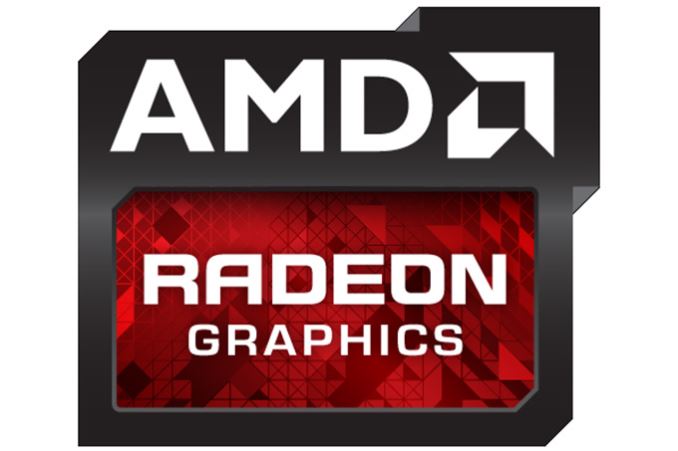

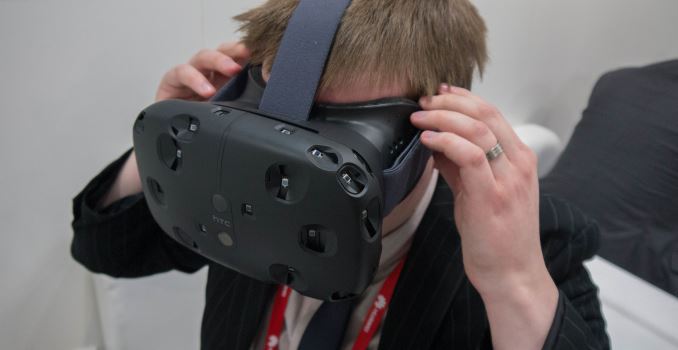
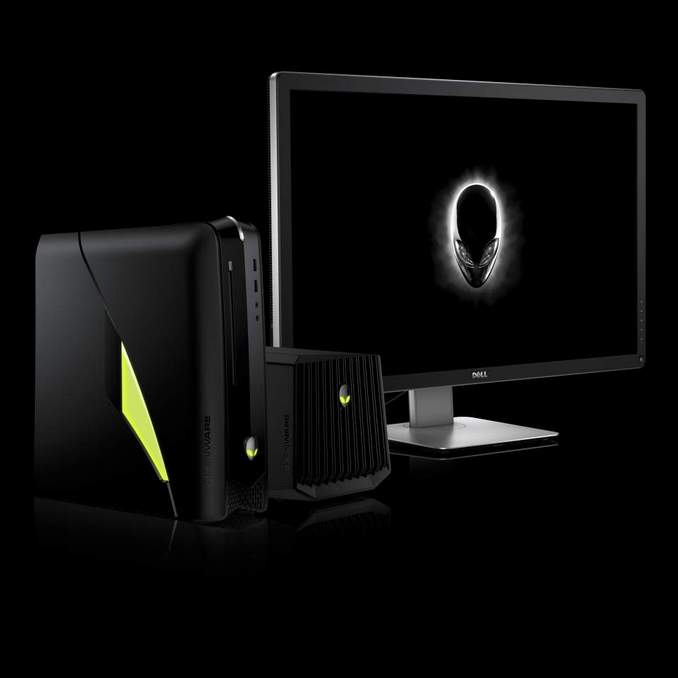











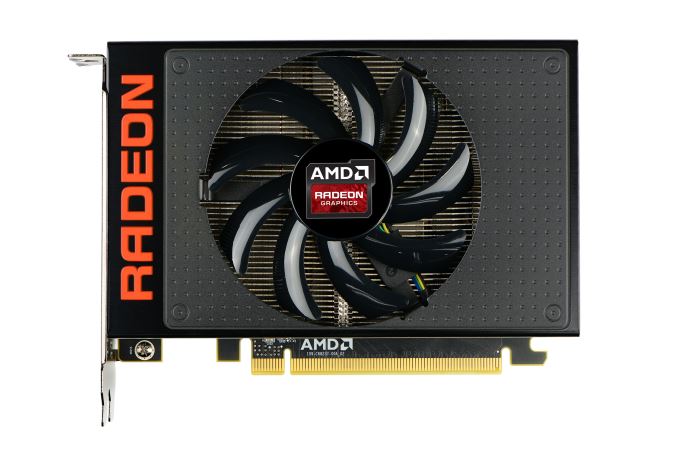

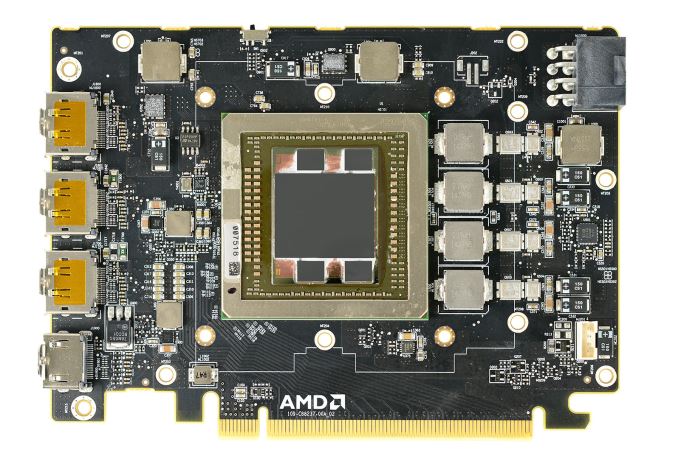




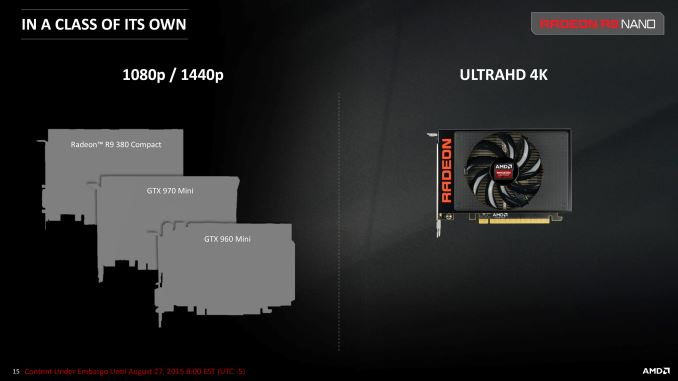







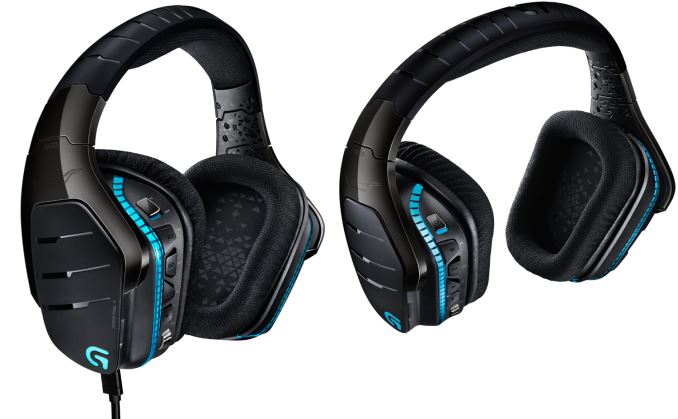


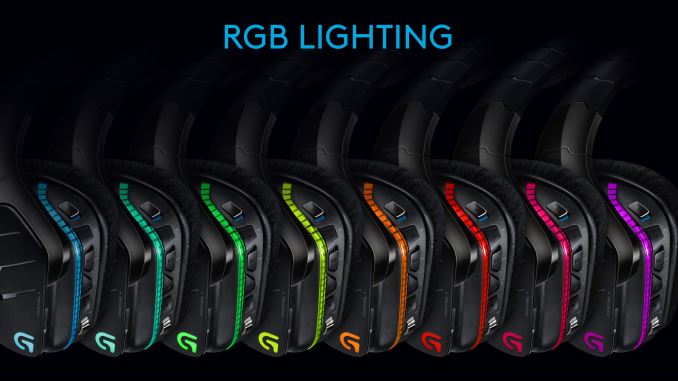



No comments:
Post a Comment